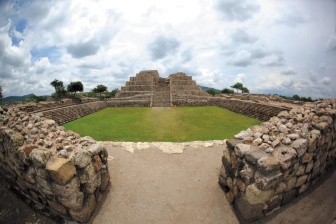Archaeological sites in Guanajuato to receive the spring equinox
News Category: News, Community News, and General Discussion
-
Exceptionally, the five archaeological sites of Guanajuato will be open next Monday 21, on the occasion of the arrival of spring; in addition, in two of them, there will be special activities this Sunday 20, when the equinox formally begins.
The archaeological zones of Cañada de la Virgen, in San Miguel de Allende; Plazuelas, in Pénjamo; Peralta, in Abasolo; El Cóporo, in Ocampo and Arroyo Seco, in Victoria, are usually open from Tuesday to Sunday, from 10:00 to 18:00 hours, but on this unique occasion they will also be operating on Monday; the latest time for public access is 17:00 hours in Peralta and Plazuelas and 16:00 hours in all the others.
El Cóporo and Arroyo Seco will offer a special program organized by their municipalities, which will be held at the Visitor Centers of each archaeological zone.
“Chichimeca Equinox” is the name of the program that will be offered in El Cóporo, this Sunday from 12:00 noon and will consist of a ritual ceremony and a gastronomic sample where traditional dishes can be tasted. In Arroyo Seco, meanwhile, “Nabí. El sol entre las Piedras” will be offered in Arroyo Seco, with various cultural activities and a gastronomic and handicraft exhibition.
On the border strip of Mesoamerica is El Cóporo, an important pre-Hispanic settlement, inhabited between 500 and 900 AD. In its urban design, there is a clear differentiation of spaces: with public and domestic areas in its lower part and civic and ceremonial complexes located on the slopes and the top of the hill that gives its name to the site.
Considered one of the most important rock art concentrations in the country, Arroyo Seco has more than 42 pictorial panels distributed among rock shelters scattered on two hills, known as La Zorra (Complex A) and La Tortuga (Complex B). These paintings were painted over the course of several centuries and range from the passage of hunters and gatherers to the early years of the conquest.
Also to welcome the season is Plazuelas, which was one of the most complex pre-Hispanic cities in the southern region of the state, noted for its harmonious integration into the landscape of the Sierra de Pénjamo, whose occupation occurred between 600 and 900 A.D. Its main elements are a ball game court and a set of squares and pyramidal bases that have been named Casas Tapadas of great beauty and architectural richness. Admirable is also the abundance of petroglyphs scattered among the rocks of the place.
Peralta, a site whose constructive monumentality places it among the largest civic ceremonial centers of this portion of Mesoamerica, was inhabited between 300 and 750 AD. Among the monuments of this settlement deserve special attention the ceremonial building called Double Temple and Sunken Patio as well as the Enclosure of the Rulers.
The heart of Cañada de la Virgen is located on the top of a hill associated with a set of deep ravines and its peak took place between 640 and 900 AD. The settlement is conformed by several architectural complexes closely linked among which stands out the House of the Thirteen Heavens, a pyramidal base of 15 meters high, with lateral platforms that close a wide sunken patio.
Guanajuato’s archaeological sites are open to the public of all ages. General admission costs 55 pesos and 17 pesos for children from 6 to 12 years old; except for the Cañada de la Virgen archaeological zone, which has a general price of 70 pesos and 20 pesos for children.
-


Leave a Reply